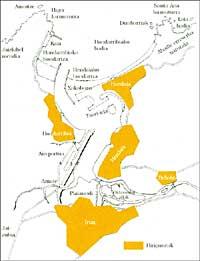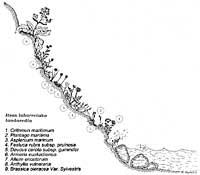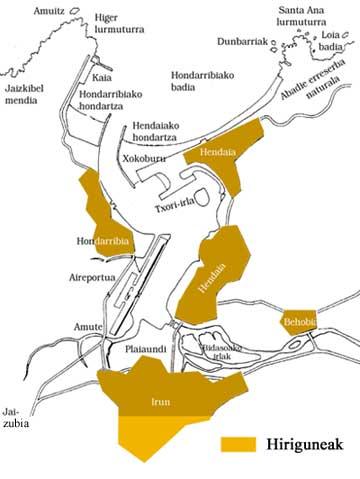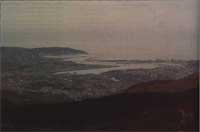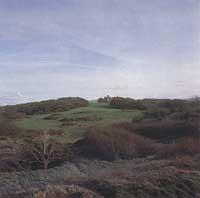Cliffs and fields of Txingudi Bay
1992/10/01 Estonba Mintxero, Mikel Iturria: Elhuyar aldizkaria
The estuary of the river Bidasoa ends with an extensive bay protected by the goats of Higer and Santa Ana, offering excellent shade conditions to birds that migrate in the harsh storms of the northwest. Opposite Cape Higer, lies the island of Amuitze, and opposite Santa Ana, the Dunbarrias that have turned Hendaia into a benchmark.
Cliffs
On both sides of these ends appear the landscapes of the cliffs that characterize the coast of the Basque Country, in the case of Mount Jaizkibel, with small accesses, due to the influence of the streams that flow into it. However, on the cliff of Hendaia, to the right of Cape Santa Ana, appears the bay called Loia, closed by a small stone island.
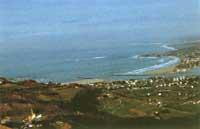
From the geological point of view, the cliffs of Jaizkibel and Hendaia are very different, since the first is formed mainly by sandstone and marl, while the second is formed by sandstone. This has a great influence both on the morphology of these means (the erosive agents do not have the same incidence in these two types of rocks), and on the hydrology (in Jaizkibel, due to the layers of waterproof marl, while in the cliffs of Hendaia there is abundant surface water, due to the characteristics of the calera, the abundance of groundwater and the caves is evident).
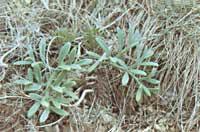
Fortunately, both Hendaia and Hondarribia are protected rocky coasts, since the first is located in the nature reserve called “Abbey Castle” and the second, although the risk of fires is still evident, thanks to the measures adopted last year by the Hondarribia City Council to preserve Mount Jaizkibel.
Finally, taking into account the ecological importance of cliff ecosystems, I consider it advisable to make a brief description of the fauna and flora of these cliffs next to Txingudi, where there are numerous plant species that do not appear anywhere else and some ecosystems that have disappeared due to human action elsewhere.
In this sense, the institutional decisions adopted to protect and maintain these environments are valuable, and in the case of Mount Jaizkibel it is necessary to undertake this path, without falling into the pretension of the collectives who want to turn the mountain into an extension of the city.
On the cliffs we can distinguish two main areas: the rocky cliff closest to the sea and the herbaceous slope formed by slopes and cornices. In the first, the living conditions are very harsh due to the different factors:
- Due to the ocean, erosion is very high, preventing soil formation necessary for plants.
- On the other hand, splashes of high-salinity waves, in addition to causing osmosis problems to plants, carry scarce soil.
- Being areas of strong wind, on the one hand it is impossible to grow tall plants and on the other the drought is evident, since the wind and strong insolation accelerate evapotranspiration.
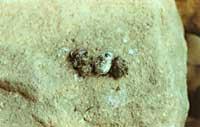
All these factors make the scarce vegetation we have in these rocky cliffs of great ecological value, since through evolution they have acquired different adaptations to live in the slots and cracks of these cliffs. The plants that inhabit these mediums belong to the herbaceous species Crithmum maritimum and Plantago maritima, to which copies of the Helechal species Asplenium maritimum have frequently appeared.
Above, as the slope and the influence of the sea are softened, the vegetation cover increases, as soil accumulation is facilitated. These aspects are full of the species of grasses Festuca rubra, in which other species also appear. For example: Leucanthemum crassifolium, Anthyllis vulnerante, Daucus carota, Tamarix gallica or Armeria euskadiensis, herbaceous species endemic to the cliffs of Euskal Herria. Tamarix gallica, which is the only large plant to live in these harsh conditions, usually appears in these regions.
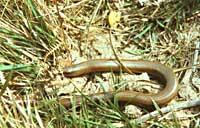
On the cliffs of Abbey, being formed by sandstones, the vegetation is richer, being the most outstanding plant the grass of the Helichrysum stoechas.
Fields
Finally, in the area where the slope disappears, both at Hendaia Abbey and in Jaizkibel, we find marine field ecosystems. The reason for this name lies in the peculiar plant community that in these aspects explains some coastal herbaceous species. In these areas, the influence of the sea is zero and the wind is the one that marks the living conditions. Therefore, the vegetation present in these places is composed of communities of bushes of Almoadite representation (vegetable communities that appear when the forest disappears), among which the most common species are tea ( Ulex europaeus), the common basket ( Genista hispanica) and the Burusoila eel ( Erica vagans).
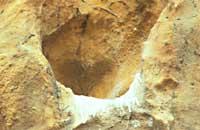
The extension of these fields and the moderate human pressure have made these aspects a place of great ecological importance, in which numerous animals appear difficult to access. Within this point we must mention the ornithological richness, since in the masses of these areas nidify the summer brambles ( Anthus trivialis), the common tunts ( Prunella modularis), the sparks ( Sylvia undata), the pitchers ( Saxicola sp. ), dark clays ( Phoenicurus ochruros), etc.
The white owls ( Tyto alba), the pilgrim hawks ( Falco peregrinus) and the red hawks ( Falco tinnunculus), the field birds, rodents and reptiles nest in the steepest escarpments. It is worth noting the outstanding presence of the culebrera eagle (Circaetus gallicus), which did not nest in the area, so its abundance of reptiles is attractive to this predator.
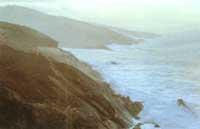
As for mammals, the disappearance of tree cover by fires has reduced the diversity of species, since the current ones are the fox (“Vulpes vulpes”), the garduña (“Tuesdays”) and the common catajineta (“Genetta genetta”).
Special mention deserves the herpetofauna of Jaizkibel, which has a rich community of reptiles thanks to its sunny and protected microclimates. Among them are the green lizard ( Lacerta viridis), the Iberian lizard ( Podarcis hispanica) or the Schreiber lizard ( Lacerta schreiberi).
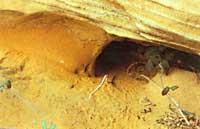
To these rural reptiles we must add those that we can find in the ecosystems of the regattas of Jaizkibel, which in addition to those already mentioned in these races of small length, are abundant, as the common frog ( Bufo bufo), the tritre marmolaire ( Triturus marmoratus) and the winged snake ( Natrix natrix). As for the description of these rivers, it is noteworthy the richness of the eel of the rivers ( Anguilla anguilla), which is a regular visitor of Jaizkibel.
I would not like to finish this article without mentioning the nesting gull colony that has appeared in the Zakur Punta area of Jaizkibel and Markotx. In this colony two types of seagulls have appeared: the grim seagull ( Larus fuscus) and the yellow-legged gull ( Larus cachinnans).
The importance of this colony lies in two reasons:
- Although the most important power supply of most seagulls in Europe and the Cantabrian are organic waste, in Jaizkibel the largest proportion of the food diet is obtained through several crabs (Liocarcinus puber and Liocarcinus corrugatus).
- A few years ago, the nidification limit of the shadowy gull was on the Brittany peninsula, but thanks to the colonies found in Galicia and Jaizkibel, today the border is in our latitudes.
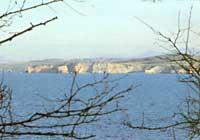
In the case of Jaizkibel, although human and fire degradation must be taken into account, biological wealth is evident, being this an indicator of the great trophic capacity of the ecosystems of Jaizkibel. If the respect we have not expressed so far to the environment appeared, within a few years Jaizkibel would become a paradise again. Let's try to make these environments better than leaving for the next generations.

Gai honi buruzko eduki gehiago
Elhuyarrek garatutako teknologia




